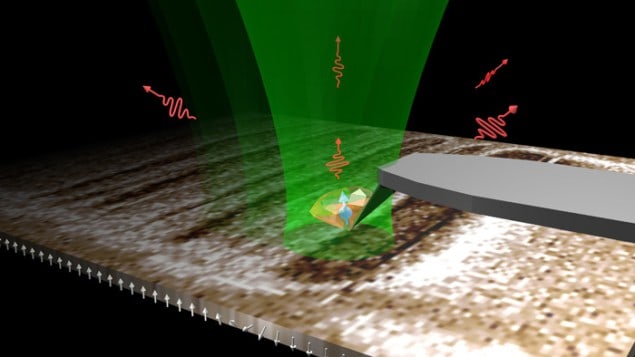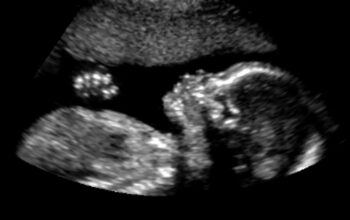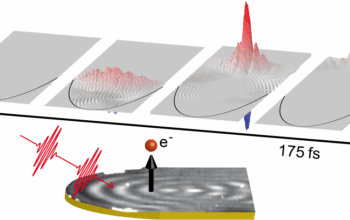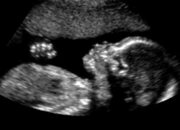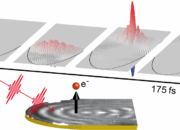The intersection of magnetism and materials science has long fascinated researchers, leading to numerous advancements in both fundamental understanding and practical applications. One of the most intriguing phenomena in this realm is the behavior of magnetic domain walls. These are thin regions where the magnetic orientation of adjacent domains changes. Recent advancements in capturing images of these magnetic domain walls using diamond defects present a fresh perspective on magnetic phenomena. This work not only promises new insights but also piques curiosity regarding the interplay between defects and magnetic properties.
Magnetic domain walls, often considered as the seams or boundaries between regions of aligned magnetic moments, exhibit unique dynamics and physical properties. When subjected to external magnetic fields, these walls can move, facilitating data storage and manipulation in modern magnetic materials. Understanding the mechanics underlying their movement and stability is crucial for advancing technologies such as magnetic switches, memory devices, and spintronics. However, direct observation and characterization of these domain walls have historically posed significant challenges due to their nanoscale dimensions and the complexity of surrounding materials.
The advent of diamond defects as a means of imaging these elusive structures has been a groundbreaking development. Diamond, particularly in its synthetic form, can be engineered to contain specific defects, such as nitrogen-vacancy (NV) centers. These NV centers possess remarkable properties, including a sensitivity to magnetic fields that enables them to serve as effective probes. When placed within a ferromagnetic material, these defects interact with the local magnetic environment, allowing researchers to visualize the magnetic domain walls with unprecedented resolution and clarity.
The promise of using diamond defects extends beyond mere imaging. The high thermal stability of diamond makes it an appealing substrate for nanostructures, permitting the integration of magnetic materials with beneficial characteristics such as high coercivity and thermal stability. This synergy between diamond defects and ferromagnetic materials can lead to enhanced performance in devices, adding yet another layer of exploration to the ongoing research.
The methodology employed to exploit diamond defects for imaging magnetic domain walls is as multifaceted as it is fascinating. Researchers often utilize a combination of electron spin resonance (ESR) and optical techniques, capitalizing on the unique photophysical properties of NV centers. In this context, techniques such as spin-dependent photoluminescence are instrumental in mapping the magnetic landscape at the nanoscale. By linearly correlating the intensity of emitted light from the NV centers with the magnetic state of the surrounding domain walls, scientists can generate detailed images that reveal not only the position but also the dynamics of these magnetic boundaries.
The implications of visualizing magnetic domain walls through this innovative approach are profound. For theorists, it opens new avenues for the systematic study of domain wall interactions and their stability under varying magnetic field strengths and temperatures. Empirical data gleaned from these observations may refine theoretical models, providing a more comprehensive understanding of magnetism at the microscopic level. For experimentalists, the enhanced visualization capabilities may facilitate the design of novel materials characterized by specific magnetic behaviors, potentially leading to the discovery of materials optimized for use in quantum computing or advanced data storage solutions.
Moreover, this approach encourages a paradigm shift in how we think about defects in solid-state physics. Traditionally, defects within crystal lattices have often been regarded as detrimental, undermining the properties of a material. However, the demonstration that diamond defects can be effectively harnessed to glean critical insights into the behavior of magnetic phenomena suggests a reevaluation of defects’ roles. Perhaps, within the right context, defects can be viewed as valuable assets rather than mere liabilities—a subtle yet significant change in perspective that could influence future material development strategies.
As we delve deeper into research surrounding diamond defects and magnetic domain walls, several questions arise. What other properties of materials can be probed using similar defect-based imaging techniques? Could the same principles of employing NV centers be applied to other types of materials, such as superconductors or ferroelectrics? Furthermore, what implications could this hold for our understanding of complex magnetic systems, such as skyrmions, which are of paramount interest for future data storage technologies?
In conclusion, the marriage of diamond defect technology with the study of magnetic domain walls is emblematic of the dynamic research landscape in condensed matter physics. As exploration in this area continues, the potential for groundbreaking revelations grows, suggesting that our understanding of magnetism is still in its infancy. Through this innovative lens, we not only stand to gain a deeper comprehension of fundamental magnetic phenomena but also to foster the development of transformative technologies that hinge on our ability to manipulate and control magnetic states at the nanoscale. The future is indeed bright for the intersection of diamonds and magnetism, promising renewed curiosity and inspiring successive generations of physicists to unravel the mysteries that lie at this fascinating frontier.
